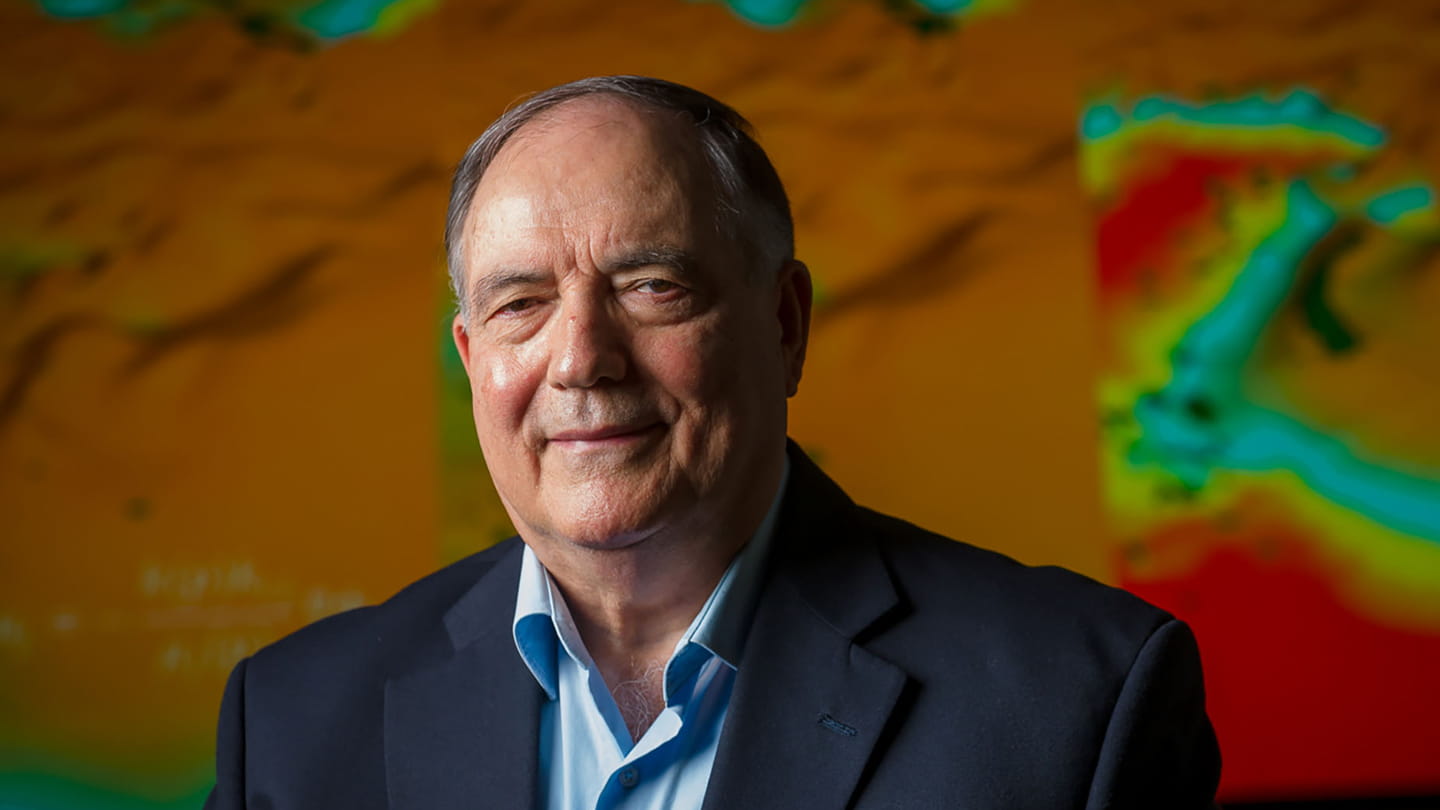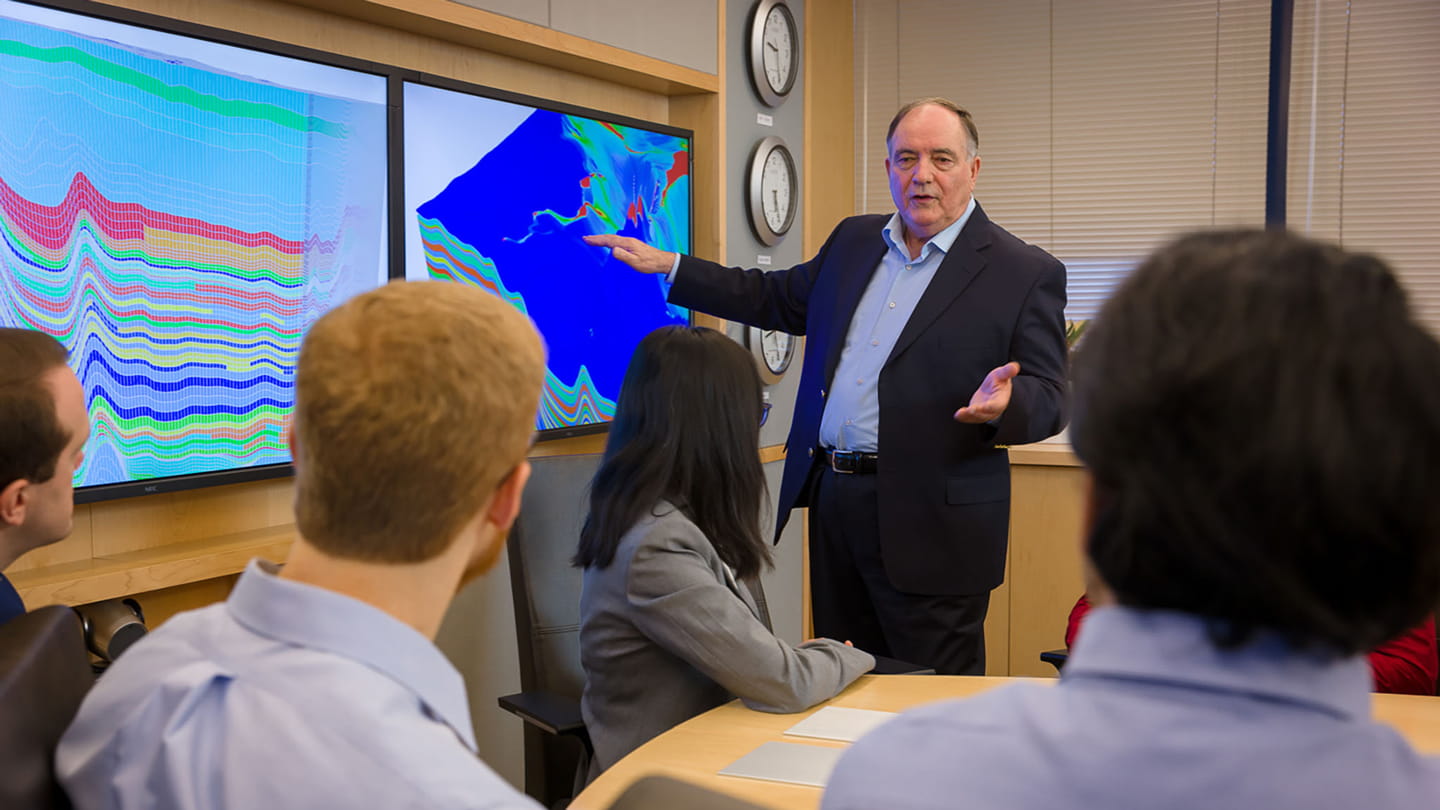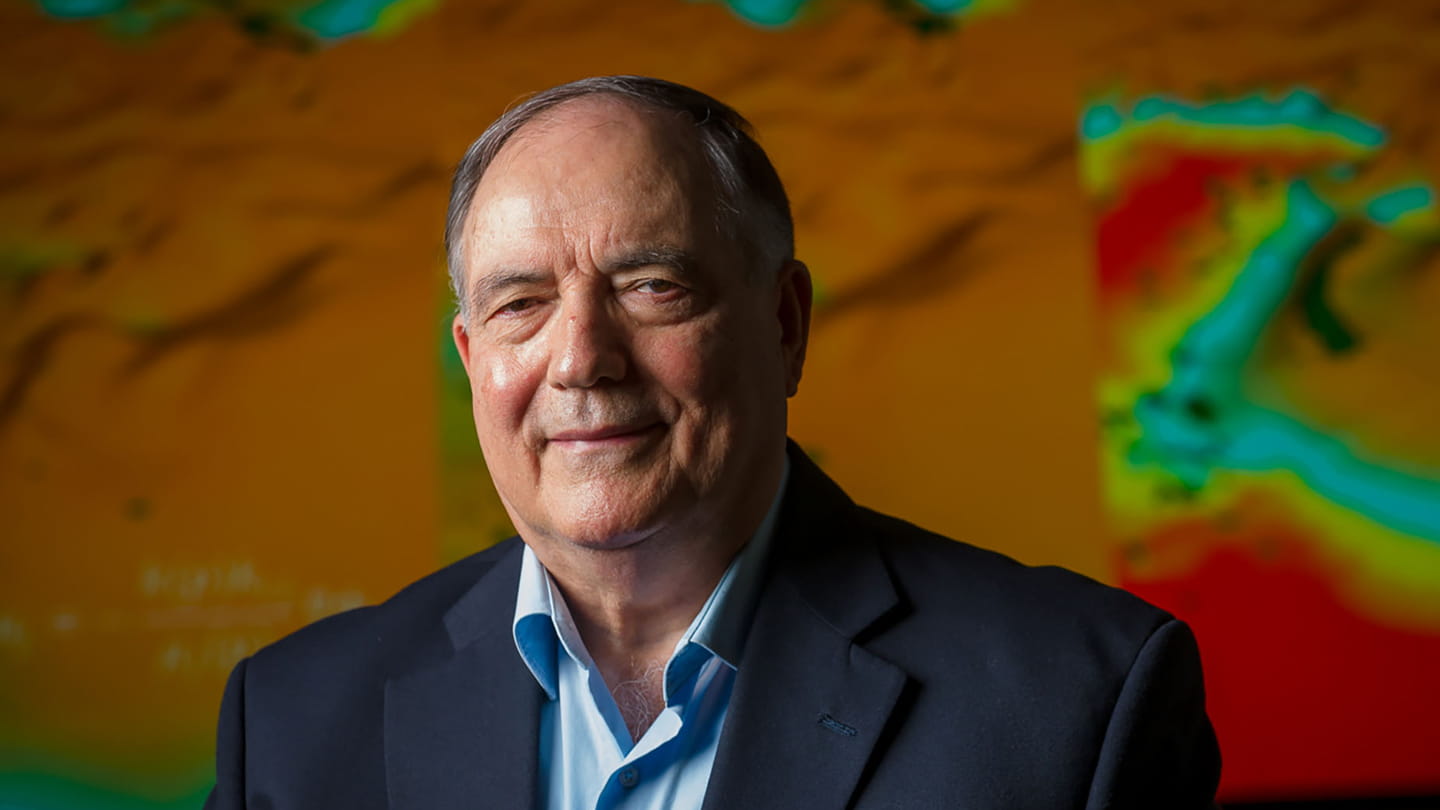Ali H. Dogru – an innovative thinker combining math, science, and some of the best available technology
Understanding the geology of Saudi Arabia requires the application of multiple disciplines.

- Dogru works with the world’s largest known oil reserves
- Building a credible mathematical model of a gigantic reservoir requires the collection of vast amounts of rock, fluid, geological, and seismic data
- Dogru’s team utilizes some of the world’s most advanced supercomputers
Sitting at his desk with the bright afternoon sunlight of Saudi Arabia shining into his office, Ali H. Dogru, Saudi Aramco Fellow and chief technologist at Saudi Aramco’s Exploration and Petroleum Engineering Center – Advanced Research Center (EXPEC ARC) in Dhahran reflects on his 30 years at Saudi Aramco.
“Every day I have endeavored to implement science to help deliver the energy people need.”
Ali H. Dogru, Saudi Aramco Fellow
“Like the stars billions of miles away, which we can understand by applying math and science, with some of the best available technology we are working to reveal the mysteries that lie within the Earth and the flow of oil and gas. In Earth sciences, so much is still unknown, but by combining mathematics, physics, chemistry, and computer science and using some of the world’s most advanced computers, we continue to learn more about the geology beneath our feet,” Dogru says.
Dogru has a lot to work with. With the world’s largest known oil and gas reserves, and the potential for more — a significant part of the world’s energy comes from the gigantic oil and gas reservoirs in Saudi Arabia.
Modeling the Earth
Managing these assets and discovering future hydrocarbon assets requires the use of high-end technologies, computer simulation chief among them. Like weather forecasting, digital models of an underground oil or gas reservoir are built on a supercomputer, generating colorful 3-D maps showing how fluid fronts move within the reservoir.
As an input for the model, reservoir simulators require the physical description of the rocks and their properties at any point in the reservoir. The other part of the reservoir simulator is the mathematical model — highly complex mathematical algorithms describing the flow of fluids.
“Similar to a house built of bricks, a reservoir is divided into small elements called grid blocks. Using more grid blocks in a reservoir model can represent changes in rock properties more accurately. Rocks carry the fluids, so better modeled rocks yield a better description of the physics of the flow, and therefore, more accurate simulation results,” says Dogru.
“For giant reservoirs, we need to use grid blocks in the order of millions, billions, and more, to properly model the reservoir and fluid movement. Not only is this process very expensive, but in some cases it is just not possible.”
“Building a credible model of a gigantic reservoir requires a collection of vast amounts of rock, fluid, geological, and seismic data, as well. The size of the data is much bigger compared to a regular reservoir anywhere in the world.”
Applying multiple disciplines
Dogru says working to understand the geology across Saudi Arabia requires the application of multiple disciplines.
“It really is fascinating work, utilizing some of the world’s most advanced supercomputers, which I have been very fortunate to have at my disposal, enabling me and my team in Dhahran and in the U.S. to work on fascinating scientific challenges.”

By combining mathematics, physics, chemistry, and computer science, and using some of the world’s most advanced computers, the team at Saudi Aramco’s Exploration and Petroleum Engineering Center – Advanced Research Center (EXPEC ARC) continue to learn about the geology of Saudi Arabia.
The technology is impressive. “Currently, we have access to one of the world’s largest supercomputers, and we are not standing still. We continue to invest, and in 2020 we are adding to our available supercomputing power, keeping us at the very highest end of processing capability.”
Dogru notes that with such powerful technology, and his team’s innovative thinking, they have the opportunity to change the fundamental analysis of physics in reservoir engineering.
“When our computing power is combined with the algorithms we develop in-house, we can test new ideas that we have never been able to do before, and as a result, we are seeing a paradigm shift in reservoir simulation. For example, in 2015, on the King Abdullah University of Science and Technology Shaheen II supercomputer, our new in-house Basin Simulator was tested on hydrocarbon-bearing portions of the entire Arabian Peninsula, using 130 billion cells with a half billion years of history.
“The following year, we were able to simulate a 1 trilliongrid block hydrocarbon migration — a world record achieved using in-house developed technologies. And just this year, we went to 20 billion grid blocks in one of our major oil fields, to simulate the world’s largest oil field’s production history — with many of its wells over half a century old — using the supercomputers at our computer center in Dhahran.”
People POWER
Dogru notes how fortunate the team is to have developed in-house their parallel oil and water enhanced reservoir simulator (POWERS) family of reservoir and basin simulators.
“We started developing these all the way back in 1994. Now, this includes TeraBasin, simulating the history of the basin, generation and migration of oil and gas into today’s reservoirs.
This simulator is capable of simulating the geological history of basin formation, deposition of layers over millions of years, and additionally, the generation, migration, and accumulation of oil and gas over millions of years. This product was part of the company’s TeraPOWERS simulator development, a next-generation reservoir and basin simulator that allows computational modeling power with unmatched speed and efficiency.
“But we don’t just develop simulations. With such advanced technology at our disposal, we develop people. I believe that people can develop technology, but technology cannot develop people. Therefore, we need to develop a workforce that can develop the technology we need. Our people have the opportunity to work on fascinating challenges, and many in the team have worked with me for more than 20 years.”

Ali H. Dogru working with Aramco’s Boston team.

Our People: Biography of Ali H. Dogru
Ali H. Dogru joined Saudi Aramco in 1988, and then became the general supervisor of the Technology Development Division — in charge of both reservoir and production technologies. Dogru is now a Saudi Aramco Fellow at Saudi Aramco’s Exploration and Petroleum Engineering Center - Advanced Research Center (EXPEC ARC).
He has been affiliated with the Massachusetts Institute of Technology (MIT) since 2011. In 2019, the MIT Department of Earth, Atmospheric, and Planetary Sciences selected him as an Earth Resources Laboratory (ERL) Fellow, becoming among the only three in the world.
Dogru received the Society of Petroleum Engineer’s (SPE) Reservoir Description and Dynamics award, the SPE John Franklin Carll Award, World Oil’s Innovative Thinker Award, and in 2014, he received SPE’s highest honor of Honorary Membership.
Dogru has an undergraduate degree in Engineering from Istanbul Technical University, and a Ph.D. in Petroleum Engineering/Applied Mathematics from the University of Texas at Austin. He conducted his postgraduate research at the California Institute of Technology in Chemical Engineering.
Dogru has taught in the Mechanical Engineering Department of the University of Texas, and the Norwegian Institute of Technology, in addition to teaching Mathematics at the University of Texas at Dallas.
In 2017, he was elected to the United States National Academy of Engineering.
More from Elements
The material in this article is intended to be for general informational purposes only, and readers should not place undue reliance on the statements or opinions therein. Any information provided speaks only as of the date this content was published and Saudi Aramco undertakes no obligation to correct, update, or revise any statements or opinions made in or implied by this article.



